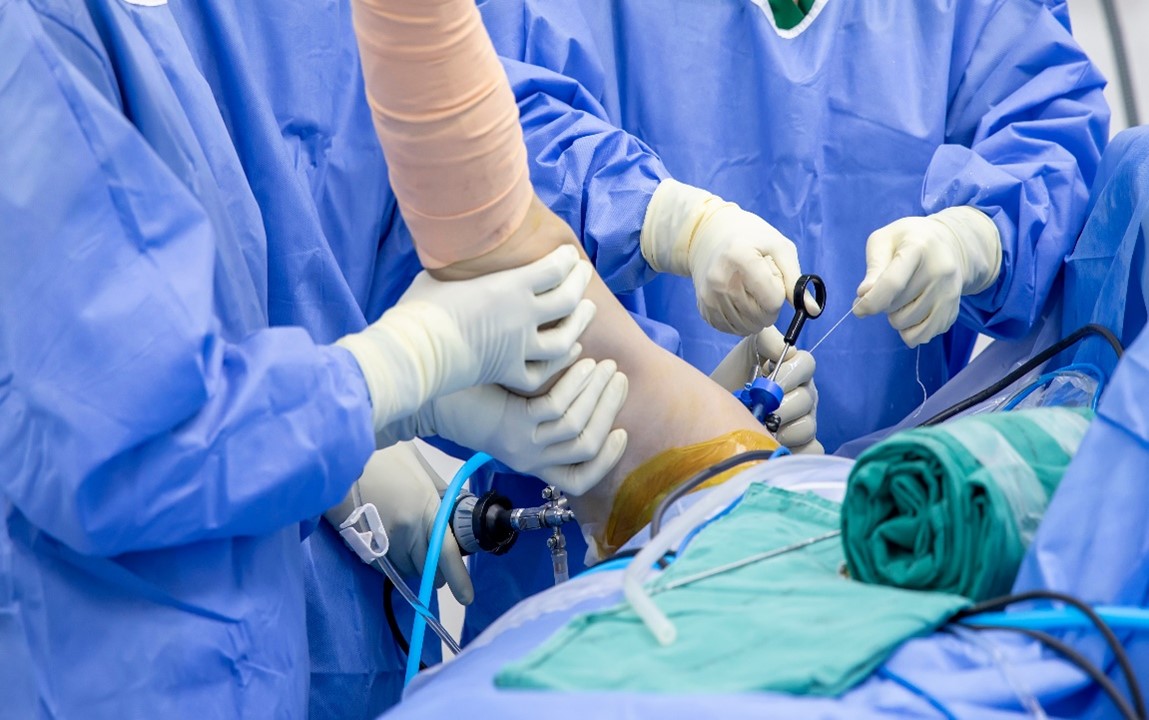A specialized surgical technique used by orthopaedic surgeons to diagnose and treat various shoulder joint problems. This blog gives an overview of shoulder arthroscopy.
A minimal invasive procedure that allows surgeons to examine and treat the inside of the shoulder joint using small instruments and a tiny camera called an arthroscope. It is commonly used to address conditions such as rotator cuff tears, shoulder impingement syndrome, labral tears, shoulder instability, and arthritis.
Procedure
- Preparation: Patients receive aesthesia to ensure comfort during the procedure. The shoulder area is cleaned and sterilized.
- Insertion of Arthroscope: A small incision is made near the shoulder joint. The arthroscope, equipped with a light source and camera, is inserted through this incision to provide a clear view of the inside of the shoulder joint on a monitor.
- Diagnostic Phase: The surgeon examines the joint structures, including the cartilage, ligaments, and tendons, to identify any abnormalities or injuries contributing to the patient’s symptoms.
- Treatment Phase: Depending on the findings, additional small incisions may be made to introduce surgical instruments. These instruments allow the surgeon to repair damaged tissues (such as torn tendons or ligaments), remove bone spurs, or stabilize the joint.
Benefits
- Minimally Invasive: Compared to traditional open surgery, shoulder arthroscopy involves smaller incisions, resulting in less tissue damage, reduced post-operative pain, faster recovery times, and lower risks of complications such as infection.
- Accurate Diagnosis and Treatment: The arthroscope provides a magnified view of the shoulder joint, enabling precise diagnosis and targeted treatment of specific conditions.
- Outpatient Procedure: In many cases, shoulder arthroscopy is performed as an outpatient procedure, allowing patients to return home the same day after a brief observation period.
Recovery
- Post-Operative Care: Patients may experience mild discomfort, swelling, and stiffness following the procedure, which can typically be managed with pain medications and ice packs.
- Physical Therapy: Rehabilitation exercises and physical therapy are essential components of recovery to restore shoulder strength, flexibility, and function.
- Gradual Return to Activities: The timeline for resuming normal activities varies depending on the extent of the procedure and individual healing progress, ranging from several weeks to a few months.
Risks and Considerations
Shoulder arthroscopy is safe, potential risks include infection, bleeding, nerve injury, stiffness, and blood clots. However, these complications are rare. Patient suitability for shoulder arthroscopy depends on factors such as the specific shoulder condition, overall health, and previous treatments.
Shoulder arthroscopy represents a significant advancement in orthopedic surgery, offering patients a less invasive option for diagnosing and treating shoulder joint problems effectively, with the goal of reducing pain and improving shoulder function and quality of life.

